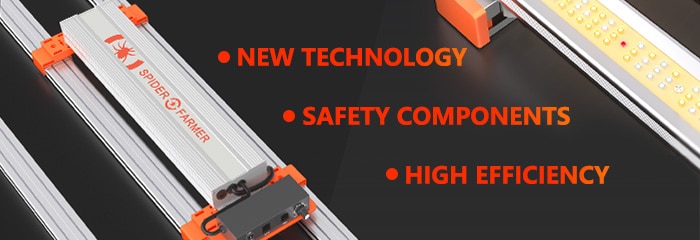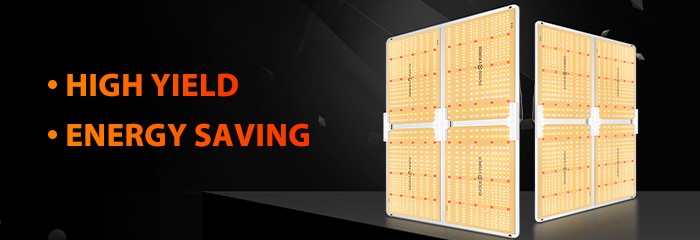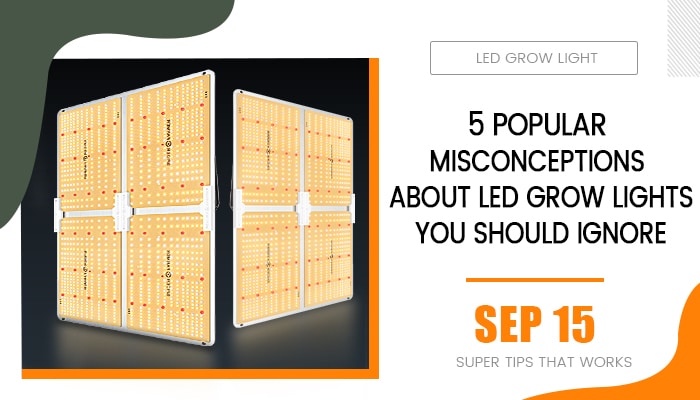The last century has seen tremendous innovation in the world of grow lights. We have moved from compact fluorescent lights (CFLs) to high-pressure sodium (HPS) lights, Metal Halide (MH) lights, and Double-Ended High-Pressure Sodium (DE HPS) lights.
You may want to ask, where are LED lights? While all these innovations were mainstream, LED lights were coming up in the background. LED light technology has steadily outgrown its limited use in the home or commercial lighting fixtures and now takes center stage in agriculture.
How Popular Are LED Grow Lights?
LED tech has significantly advanced in the last decade. We have seen more fixtures designed for commercial-scale indoor cultivation. But despite its growing popularity, most home growers and large-scale or commercial growers are yet to fully realize and leverage the great potential of LED grow lights.
We can attribute this to a few things, including many misconceptions about LED tech and LED grow lights. We have outlined some of these, including proven reasons to ignore them.
First Misconception – The LED grow light technology is not proven.
Growers skeptical about LED grow lights are always quick to point out how the technology is novel and unproven. This is quite understandable— choosing an option that has stood the test of time over something new is easier.
Interestingly, the LED grow lights, and the technology they run on have been proven to perform excellently over and over. In 2017, Oklahoma State University published a report showing that LED grow lights enhance the development, quality, and productivity of different indoor plants. Bhan et al. (2018) also reported positive results in their research on using LED lights to improve plant growth, nutrition, and energy-use efficiency in indoor crops.
Truth – LED grow lights are excellent for indoor crop production.
Second Misconception – LED grow lights are made with dangerous components.
It is normal for anyone to be worried about their safety, but the fear of the components of LED grow lights being unsafe is entirely unfounded. Some growers believe LED bulbs are made from mercury and other hazardous chemicals. But is it not interesting that mercury is only found in CFLs and fluorescent bulbs? The 3-5 mg of mercury in these bulbs makes them a significant contributor to environmental pollution because they are difficult to dispose of.
The recent LED grow lights are both ecologically friendly and 100% recyclable. They are also more durable, considering the bulbs are encased in super-tough chips. These assertions have been studied and proven by regulatory bodies like the European Lamp Companies Federation (CELMA) and the Electrotechnical Components for Luminaries in the European Union.
Truth – The new generations of LED grow lights are made from safe materials. They are generally safer to use and do not pose any health hazard for the owner.
Third Misconception – LED lighting is not efficient for plant growth.
Another common misconception about LED grow lights is that they are not efficient for plant growth. However, in contrast, LED grow lights are the best for indoor growing. Plants utilize different wavelength ranges or bands within the visible light spectrum.
LED grow lights are the only set of light fixtures that can produce full-spectrum light, the closest to the light energy from sun rays. It comprises the five important wavebands plants require to thrive. These include blue light (with a wavelength range of 400-500 nm), red light (with a wavelength range of 600-700 nm), green light (with a wavelength range of 500-600 nm), and ultraviolet (UV) light (with a wavelength range of 280-400nm).
The uptake and utilization of these lights of various wavelengths determine the fruiting, growth rate, flower color, yield, root development, and other effects on plant growth. LED lighting for indoor growing can be tuned to produce any of these wavebands, depending on the plants’ stage in their growth cycle. Furthermore, research has shown that LEDs produce more marketable plants than legacy lighting systems.
Truth – LED grow lights help to grow bigger and better plants. They allow growers to craft light formulas that bring the best out of their plants regarding growth and yield.

Fourth Misconception – LED grow lights hurt production/yield.
Indoor growers are all about getting the most out of their plants, especially when it comes to yield. Many growers believe that adopting LED grow lights might not make this happen. Instead, they tend to stick to HPS grow lights because they consider them the most effective option to arrive at high yields, even if it means sacrificing the energy-saving, longevity, and eco-friendly benefits LED grow lights offer.
Plants perform better with a light spectrum that varies as they move through their growth cycle. For example, red light helps in flowering, while more blue light is necessary to ensure an excellent vegetation phase. That is why you should opt for grow lights that provide a variable light spectrum, precisely what LED grow lights offer.
Truth – LED grow lights have been shown to improve flowering in indoor plants, translating to quicker growth cycles and higher yields.
Fifth Misconception – LED grow lights cost a lot of money.
The last misconception on our list is that LED grow lights are very expensive. But is it not expected that relatively newer technology will be priced at a higher rate than the existing ones? Going for grow lights with incandescent bulbs may appeal to you as a cheaper option, but you must know they have a shorter lifespan and consumes enormous power.
On the other hand, LED grow lights justify their high upfront payment with their extended lifespan and durability. They do not last indefinitely, but you can get up to 25,000 hours (or 25 years) out of an average LED bulb. Therefore, with LED grow lights, you get better value for your investment in the long run.
Truth – The slightly higher costs of these fixtures are expected, considering it is a new technology. They compensate for this by being more efficient and durable with a longer lifespan.

You Can Never Go Wrong With LED Grow Lights
As an indoor grower looking for successful growth and high yields, you should choose LED grow lights as your source of lighting for your grow area. These innovative fixtures offer a variable light spectrum similar to sun rays, ensuring your plants get the best light quality at all stages of their growth cycle.
Check Spider Farmer catalog for highly-rated, tested, and trusted full-spectrum LED grow lights.



I am going to be doing my first full spectrum LED grow this time,so I will repost my results if anyone cares to look by the first of the year!